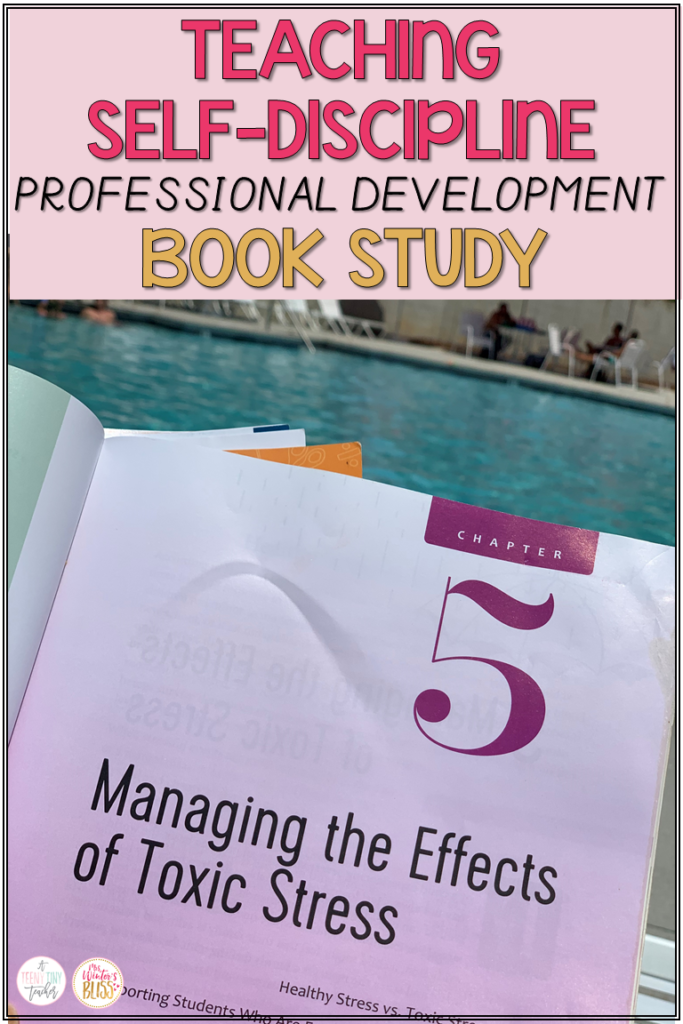
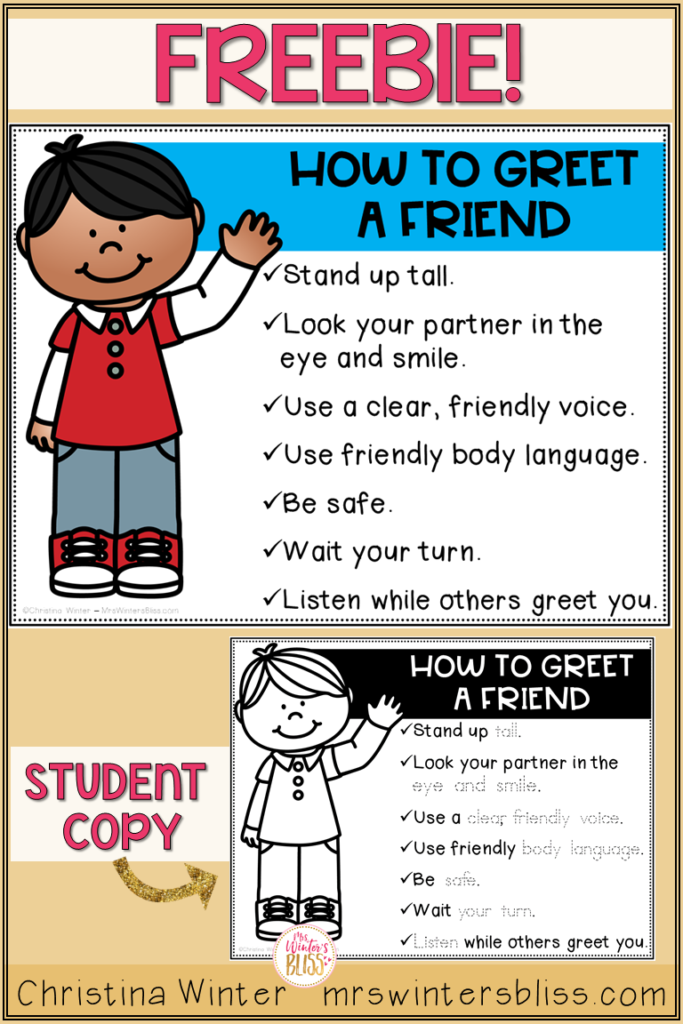

This chapter of Teaching Self-Discipline offers strategies to support students dealing with more severe behavioral problems that result from toxic stress.
Hey Friend!
It’s hard to believe we’re already to the last chapter of our summer book study on Teaching Self-Discipline! I hope you’ve found our “time together” to be valuable, insightful and of course, enjoyable!
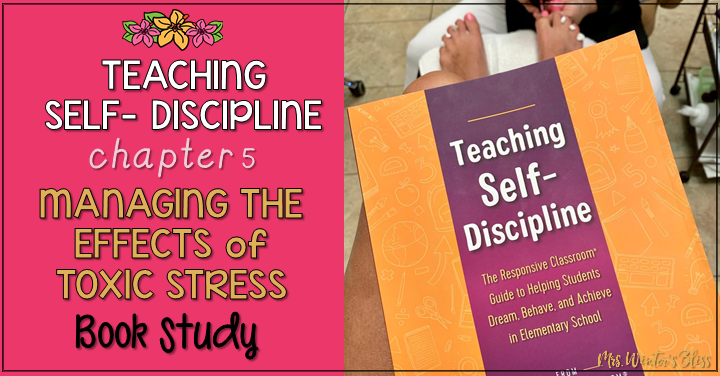
Today we’re wrapping up the study with a focus on Chapter 5: Managing the Effects of Toxic Stress.
If you’re just joining us you’ll want to take some time to look back at the posts from the earlier chapters. Chapters 1 and 2 focused on creating safe and predictable learning environments and investing students in the class rules. Chapter 3 and 4 then moved our discussion to responding to misbehavior using logical consequences and solving more problematic behavior.
Chapter 5 focuses on the important topic of how we deal with toxic stress in the classroom. The text defines toxic stress as severe stress that is felt on an ongoing basis. The chapter explains a bit of the science behind how stress impacts children’s minds and bodies, as well as their behavior in our classroom. It emphasizes ways we can support these students and provides some specific strategies for dealing with more severe behavioral outbursts that result from toxic stress.
While it can be a tough topic to think about the reality is that we likely all have students in our classrooms who experience toxic stress. Their world is not logical and they may react to things in our classroom in ways that seem illogical to us. We need strategies and support to best help these students and this chapter provides that to us. It’s a big chapter and there is a lot to unpack, so let’s get started!
Healthy Stress vs. Toxic Stress
The chapter begins by differentiating healthy stress from toxic stress. We are reminded that like adults, children will feel stress. They may range from minor things like feeling nervous about the first day of school to more extreme stress like the death of a loved one. In either case, their bodies will experience both physical and chemical changes. Their cortisol levels, blood pressure and heart rates may rise but their bodies can recover if the event is not prolonged and they have adults around them to help them cope and feel safe.
Healthy stress becomes toxic stress when the stressor happens on a regular basis and the child does not have the appropriate support around them. The cause of the stress can result from many things such as abuse, neglect, repeated exposure to violence, addiction or a parent’s chronic illness. Living with these uncertainties and dangers make children prone to react with “fight, flight, or freeze” mode.
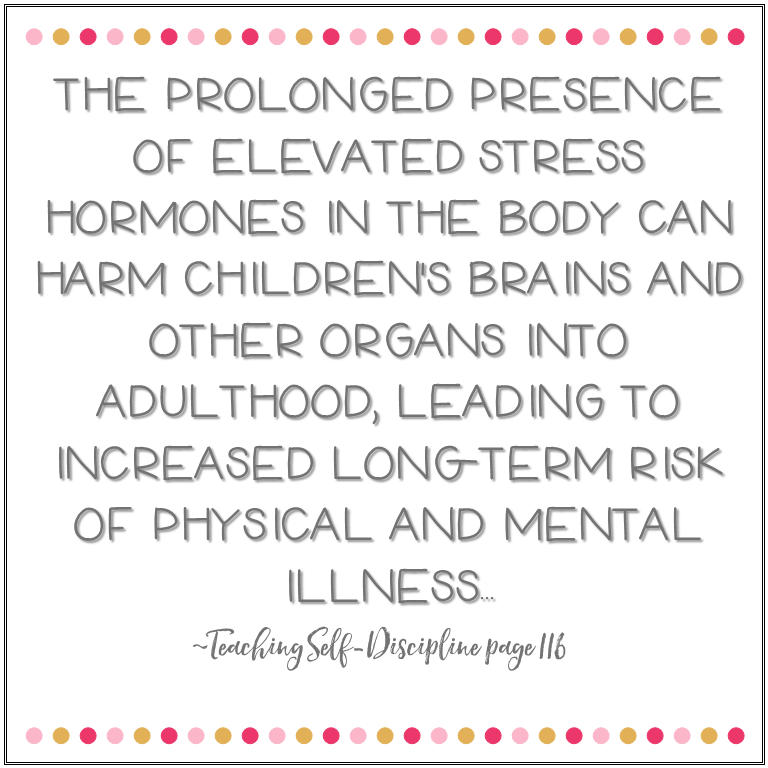
I think a key thing to remember is that they will go into those modes even when they are not in real danger. The text gives the example of a child assuming someone wants to start a fight when they accidentally bump into them in the hallway. What other situations have you experienced where a student will go into “fight, flight or freeze” mode in your classroom when no real danger was present? I think we see it pretty often.
While we know the prolonged presence of elevated stress hormones in a child’s body can cause real physical and emotional problems, the text reassures us that healthy relationships with adults who care can prevent or even reverse some of the damage. WOW, talk about the power of relationships!!
Chapter 5 details the six pillar approach to supporting students with toxic stress which include:
- Provide an emotionally safe school and classroom
- Model Respectfulness
- Explicitly teach social and emotional skills
- Incorporate playfulness into learning
- Communicate hope
- Foster your own self-care and build a supportive community
Provide an Emotionally Safe School and Classroom
Relationships matter!! The text tells us that when students with toxic stress develop strong connections with adults in a school environment it can provide a sense of safety that will help keep them from going into fight, flight or freeze mode. When students feel valued, their behavior improves and they are more engaged in academic work.
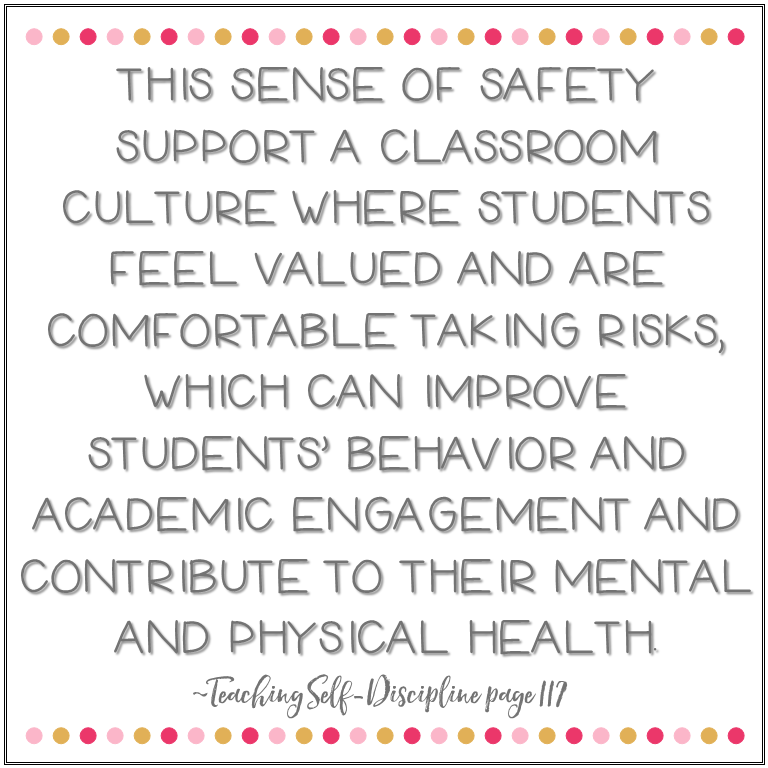
But how do you create such strong relationships with students? The text emphasizes the power of the Morning Meeting and closing circle. They provide a sense of belonging and connection, and allow students to come together at predictable times.
If your schedule doesn’t allow for a full Morning Meeting, simply implementing a morning greeting is a powerful way to build strong relationships.
A student hearing their name makes them feel that someone cares about speaking to them as an individual. This sense of belonging is key to ensuring students feel safe and are ready to learn. If you are thinking about starting a morning greeting with your class next year you can grab my FREE “How to Greet a Friend” classroom poster and copies for your students here!

I love the idea of giving students quiet time and calming energizers as a way to reflect and relax. It seems like something we could all benefit from! Just a few minutes of quiet writing, drawing, or simply breathing can really help all students (and adults!) stay focused and prepare for learning.
As a final strategy, the text suggests using Interactive Modeling to create more predictability in your classroom. Using it to practice routines and procedures helps to ensure students know just what is expected of them.
I shared more on my thoughts on developing relationships with students in this post.
Model Respectfulness
Of course we want our classrooms to be a place of respect for all students, but this is particularly important for students who experience toxic stress. They are more likely to interpret innocent interactions as disrespectful, and when they feel disrespected they may act out.
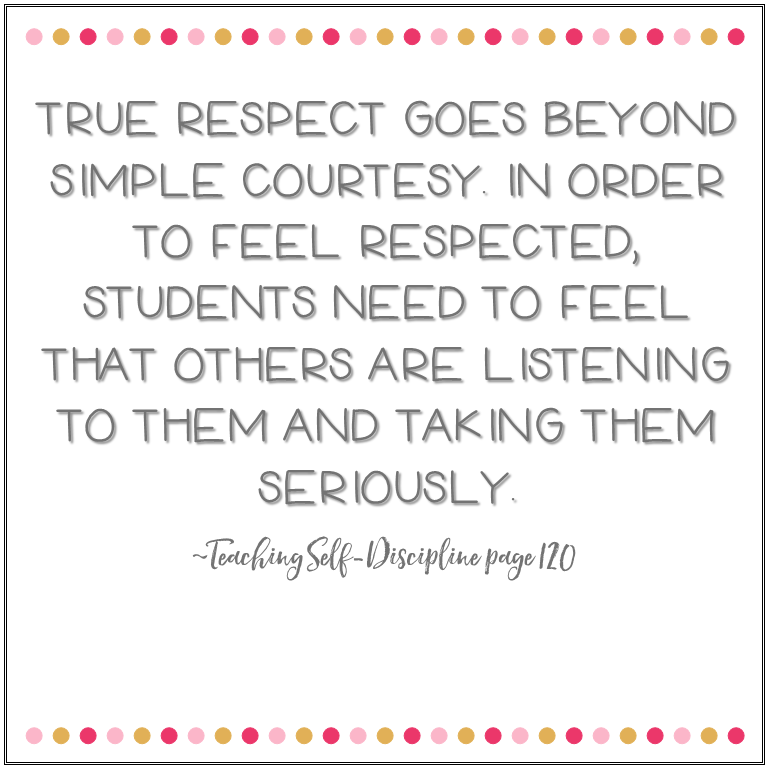
The text once again encourages us to think about our teacher language and how we use it to model respectfulness, particularly reinforcing language and reminding language.
Reinforcing language names and affirms positive behaviors. It helps students know exactly what they are doing well. I’ve shared a lot about this type of language in a previous post on the importance of providing process praise, which like reinforcing language, acknowledges the students effort, strategies and actions that contributed to their success. This type of language is key to helping students develop a growth mindset.
Reminding Language simply reminds students of the established expectations. When we use it we are showing the students we believe in their ability to make good choices and stay on task.
In addition to modeling respectfulness, the text encourages us to give students opportunities to practice their cooperation skills. Students who experience toxic stress may not feel a sense of belonging and may have difficulty connecting with others. To help students build their cooperation skills the text suggests giving them opportunities to work with their peers towards a common goal, teach them how to work together, control their emotions and overcome obstacles and seek outside support when needed.
I found when I added social time to my day, my students’ cooperation skills improved. Tasks like puzzles, blocks or building cup towers require students to communicate, contribute and work together towards a common goal. How do you help students build their cooperation skills?
Explicitly Teach Students Social and Emotional Skills
Students who experience toxic stress need extra practice controlling their impulses. Once again we are reminded of the importance of explicitly teaching social and emotional skills, just as we would reading or math.
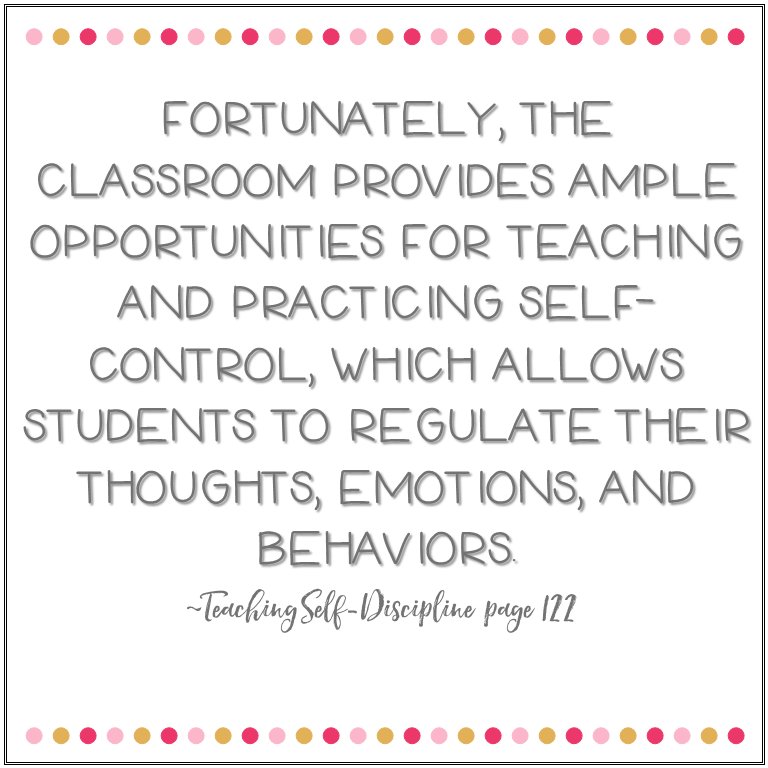
The text recommends using role-playing, verbal cues and teacher proximity to do so. If you’ve tried those things and self-control is still an issue, give logical consequences a try. As students with toxic stress learn to build self-control, the text suggests trying the following strategies to support them:
- Help them identify and label their emotions. Our students may not have the words to describe their feelings, it is our job to teach them.
- Give them a safe outlet for expressing their feelings. The text suggests pretend play, art, or creative writing. What other ideas do you have?
- Help them anticipate challenges they may face in upcoming projects and brainstorm possible solutions together. I think this is such a smart idea. It is something that takes extra planning and time, but it seems like it would be really effective.
- Teach students problem-solving skills for a variety of situations. This seems go to back to interactive modeling, but I love that they tell us to acknowledge the effort even if the student is not completely successful.
- When students are calm, teach them strategies they can use when their stress begins to rise. This is another suggestion I think is really smart and probably not used enough. That proactive work is so important!
Incorporate Playfulness Into Learning
I think we can all agree that PLAY MATTERS. Whether it be actual creative play like dress-up, songs, dance or drawings, or simply a spirit of playfulness, it is an essential part of our classrooms. Engaging in play reduces stress and helps students feel a sense of belonging. When they are engaged and having fun they feel a deeper connection to their classroom community.
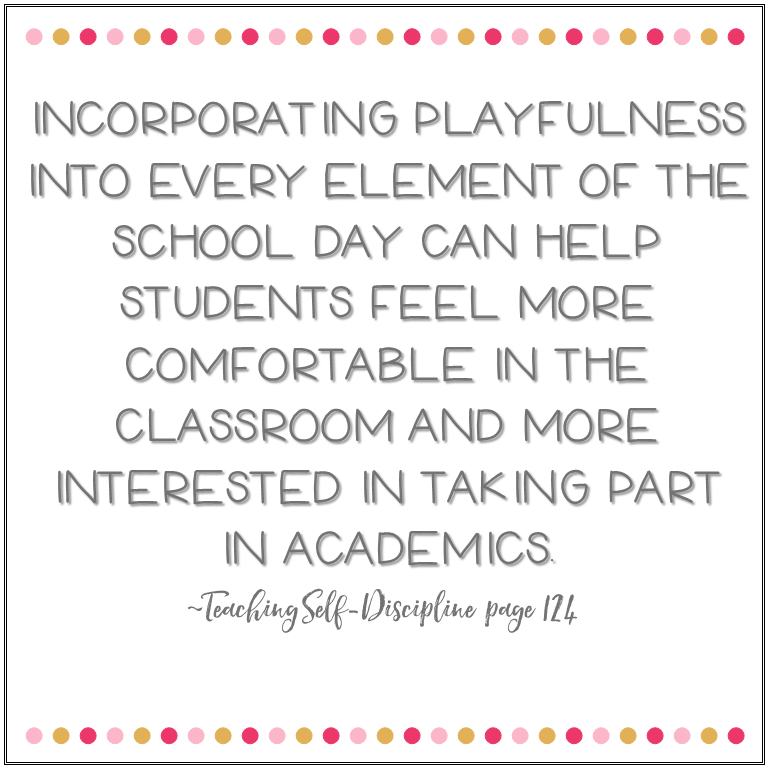
The text suggests finding ways to incorporate playfulness into each day by taking “energizer breaks”. They are a wonderful way to take a break from work, relax and have some fun. When the class discovers the activities that they love to do over and over again, they are building their group identity. I also love that the text suggests finding low-risk ways to include students who may be reluctant to participate.
In this post I shared some of the favorite things my students and I love to do when we are in need of a fun brain break! I have found that taking these breaks not only helps build the classroom’s group identity, but also helps to improve their focus and attention.
Communicate Hope
The text says that hope is “more than wishful thinking – it is a cognitive process that can be strengthened through learning and practice.” Children who experience toxic stress may have difficulty imagining a positive future for themselves. By using envisioning language we can help students picture future successes. We are building their confidence and helping them aim high.

The text lists other tips for helping students to develop a sense of hope. I won’t list them all but one that stood out to me as being extra important was the idea of promoting positive risk-taking and helping students see that mistakes are a part of learning. I truly believe in the importance of creating an environment where mistakes are normalized.
Mistakes are the essence of new learning! If mistakes and failure are seen as a sign of incompetence and something to avoid (rather than something to expect), our students will begin to avoid the challenges necessary for learning. We must show them that mistakes can actually help us develop and improve our skills and abilities. Check out this post to read more about the importance of mistakes and how I work to normalize them in my classroom.
Foster Your Own Self-Care and Build a Supportive Community
As teachers we give, give, give and then give some more! I love that the text reminds us that self-care is not a luxury; it is a necessity.
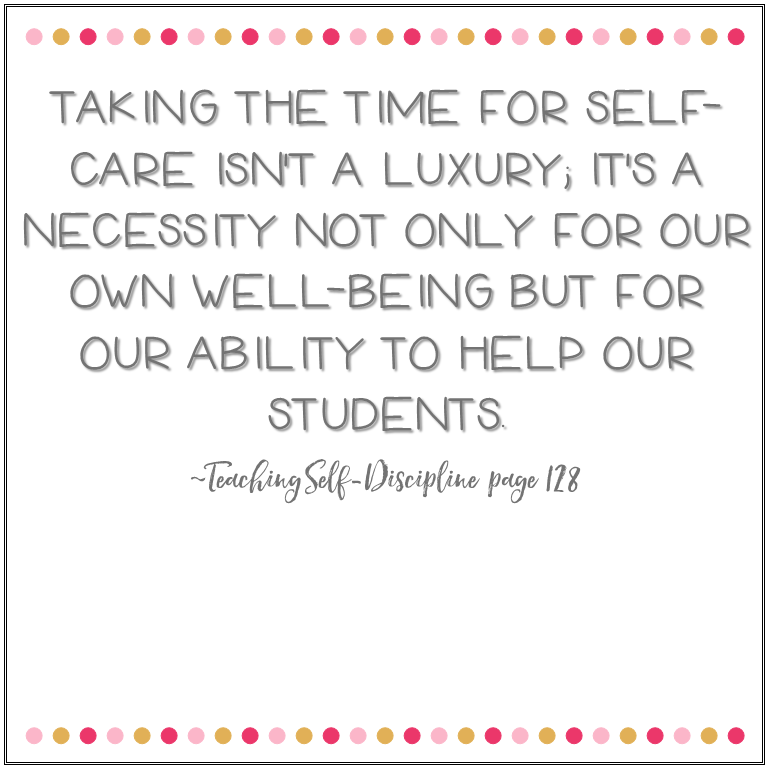
As we well know, students who experience toxic stress will likely need more support and empathizing with them can be emotionally difficult. To help ensure you can manage your class, you must also manage your own stress. The text provides a list of tips for making sure you take care of your own needs. I love the idea of celebrating your own successes and the suggestion to focus on complimenting your colleagues on what they are doing well. What a wonderful way to keep a positive outlook!
What things do you do to manage your stress? Exercise and sleep are key for me. It’s incredible what a good sweat session can do for my mindset! Remember, prioritizing your own health and well-being is never selfish. You are modeling how to care for yourself in the classroom and beyond!
Responding to Outbursts and Withdrawal
Students who deal with toxic stress will pick up on slight signs of danger and go into fight, flight or freeze mode to protect themselves. When they do so, they are not able to engage in learning. As teachers, the first thing we must do is help them calm down.
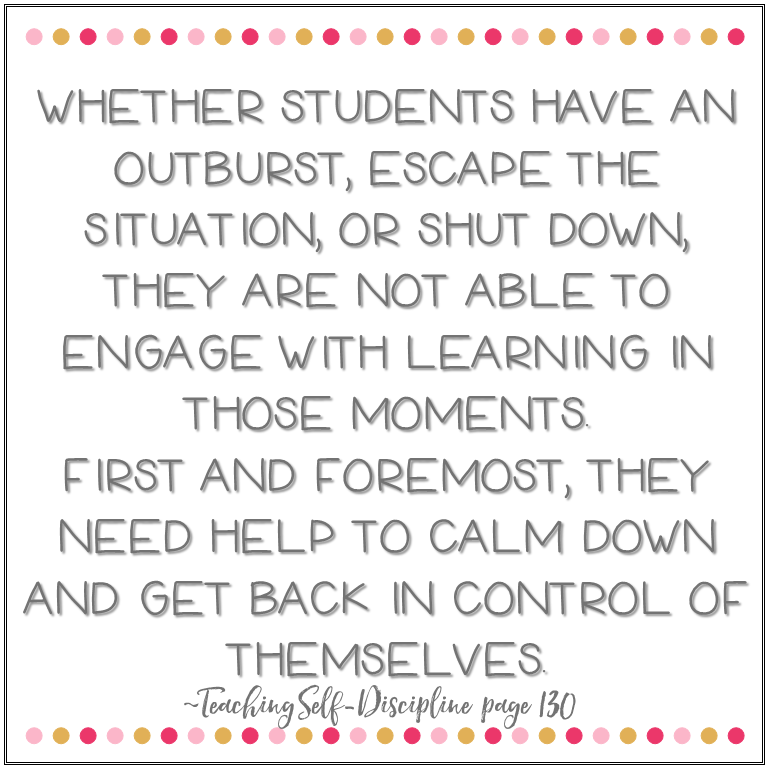
We must do so with care and compassion. The text provides tips for how we can best help these students before, during, and after an outburst.
Before: Knowing your students well can help you identify and avoid situations that may trigger a stress response. When you sense warning signs you can use visual cues, verbal cues or teacher proximity to help the students regain control. You could also send them to a time-out (if you have that established in a non-punitive way) or a teacher buddy if they need more distance.
During: The first step during an outburst is to regain control of the situation and make sure that everyone is safe. A student may need to move to a new area of the room or go work on something else for a bit. They may need time-out or a visit to a buddy teacher, guidance counselor or principal.
I like the reminder to use as few words as possible and to focus on listening instead of talking. I think this can be hard when we are in the midst of the outburst, but listening can help you gather information and figure out how to best help the student. Finally, we are encouraged to maintain empathy and remember that the student is only trying to protect themselves.
After: After the child has a chance to calm down and regain self-control you’ll want to talk to them privately about what happened and hear what they have to say. This conversation can help you identify their triggers and gives you a chance to teach them skills to help calm themselves down. These conversations also seem like a great opportunity to build your relationship.
Do you find these suggestions to be useful? Do they seem like steps you could follow? What still feels challenging about dealing with outbursts?
My biggest takeaway from this chapter was that healthy relationships have the power to actually reverse some of the damage caused by toxic stress. I find that to be very encouraging and motivating. I also really appreciate that this final chapter provided some concrete tips and strategies with a topic that is difficult for so many of us. What was your big takeaway from Chapter 5? I’d love for you to share your thoughts below!
Well this wraps up our summer book study! I hope you have enjoyed the text and gained new insights that will help make your coming year a better one for you and your students.
I hope you’ll spend the rest of your summer doing things that fill you with BLISS! 💗









